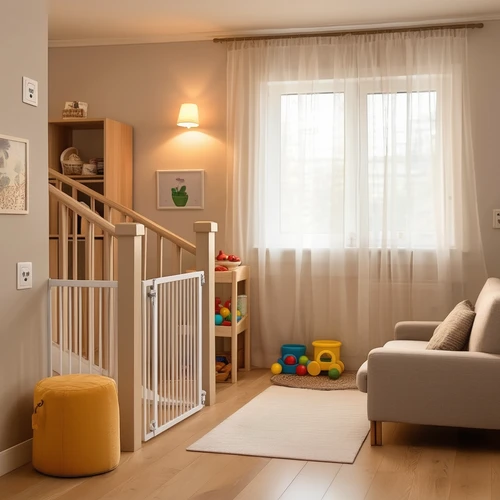Every new parent feels a surge of excitement when they hold their fresh‑born. Yet, the thrill can quickly shift to concern once you think about the hazards that lurk in a bustling home. Babyproofing is the proactive art of creating a safe sanctuary that allows your little explorer to grow, learn, and play without risk.
Start by securing the first floor. Babies reach high, so child‑proofing outlets, cords, and baseboards is essential. Install outlet covers where cords and plugs are exposed. Anchor cords to the wall or use cord‑safety clips to keep them out of reach. Place furniture with rounded edges against the walls and slide protective bumpers over sharp corners.
Next, focus on stairways. Stair gates are the most dependable first line of defense. Choose a gate that fits both the top and bottom of the stairwell and install it correctly. Keep the gate securely anchored to the frame—no screw or screw‑less systems that can loosen over time. Test the gate frequently for any wobble.
In the kitchen, the heart of the household, small hands are drawn to curiosity. Position appliances such as ovens, microwaves, and stoves on higher shelves where you seldom reach. Use heavy‑duty cabinet locks on drawers that contain knives, cleaning sprays, or other dangerous items. Store all sharp knives behind a knife block or a high cabinet, and keep cleaning products in child‑proof containers or out of reach.
The bathroom is another critical area. Install non‑slip mats and keep the shower drain covered with a safety grate. Lock all medicine cabinets and store any medication in a locked, child‑proof container. Keep the toilet lid closed with a safety latch, and remember that even “adult” sizes can be a temptation for little ones.
Sofas and beds are often overlooked. Place nighttime car seats or a baby gate at the top of the couch to prevent falls. Secure high‑end TVs and set the volume control within a low reach zone, or use a remote lock. When setting up a nursery, anchor the crib to the wall and place safety rails behind it; avoid placing heavy items on top of the crib where a child could fall.
Finally, establish a routine for safety checks. Every time a new piece of furniture arrives, assess it for potential hazards: loose legs, small parts, exposed wires. Label each corner of a room with a child‑proofing note—“Keep out of reach” or “Danger zone.” This routine not only safeguards children but also creates peace of mind for parents.
Remember, babyproofing is a continuous process that must evolve as your child grows and their explorations deepen. By taking a methodical approach and using the right tools and products, you craft not only a safer environment but also a space where your baby can confidently discover the world.


